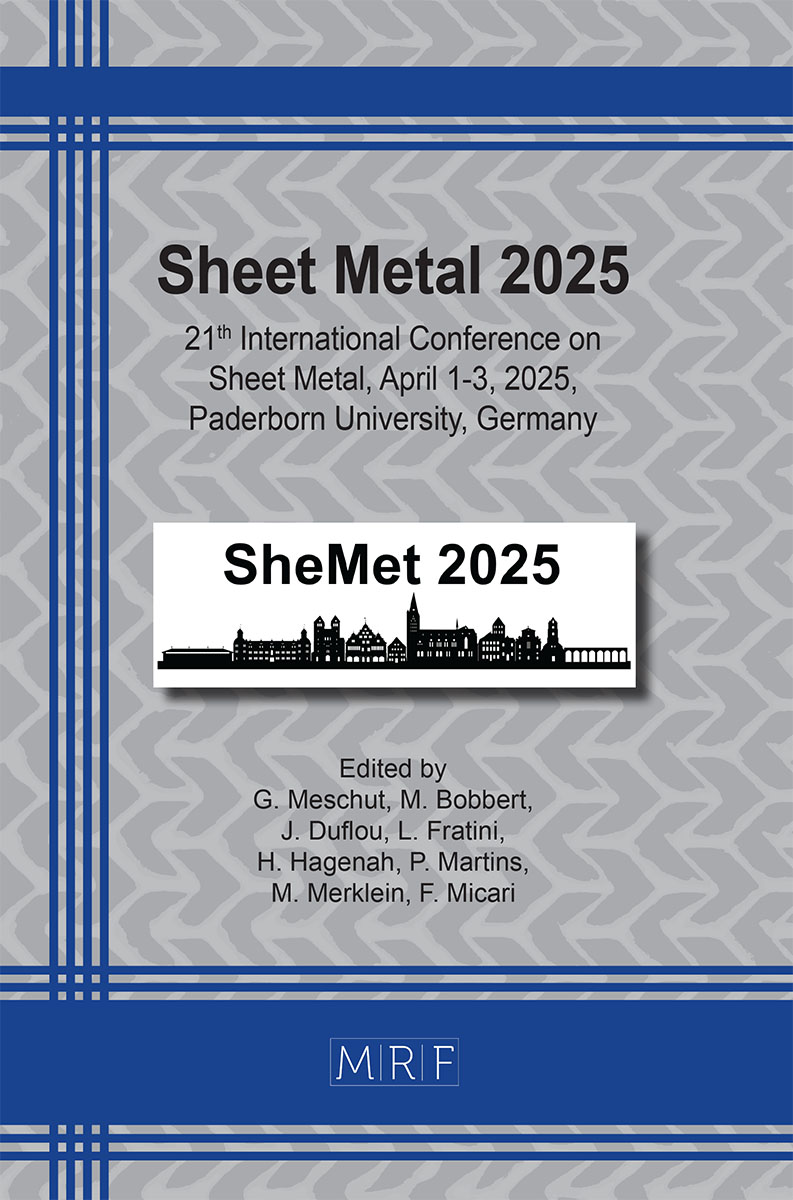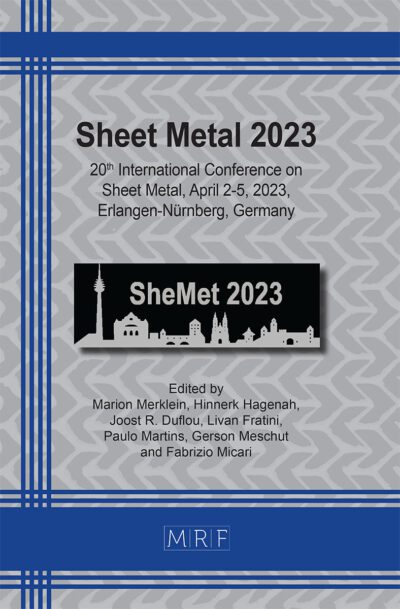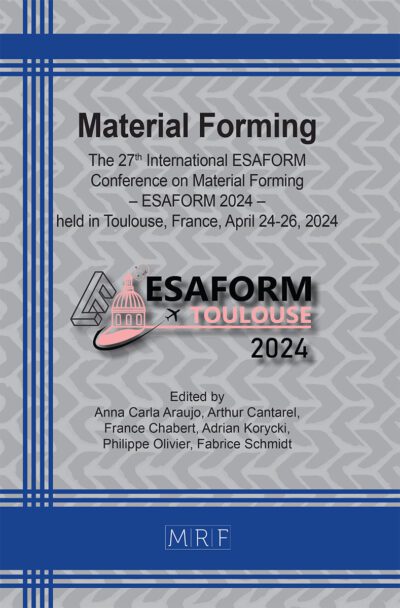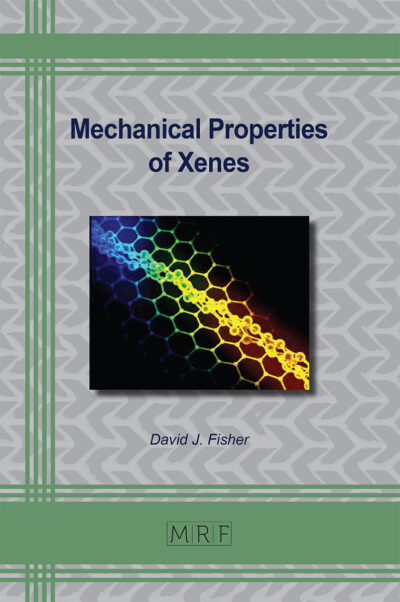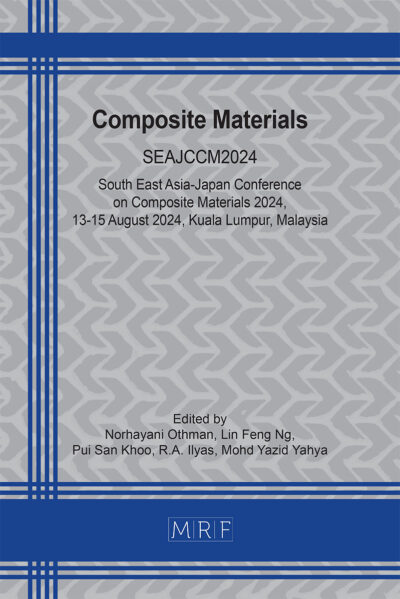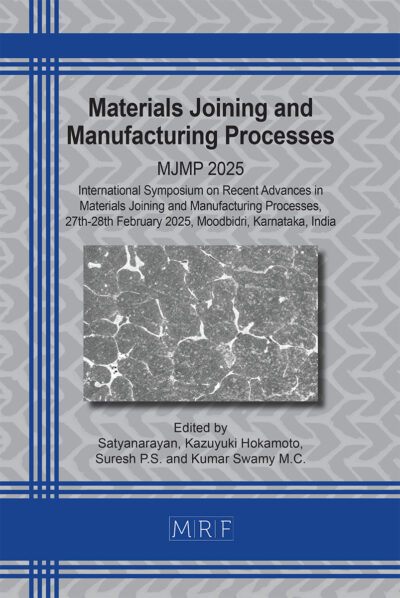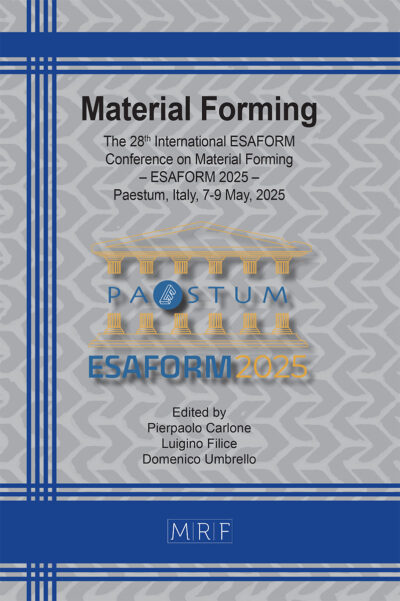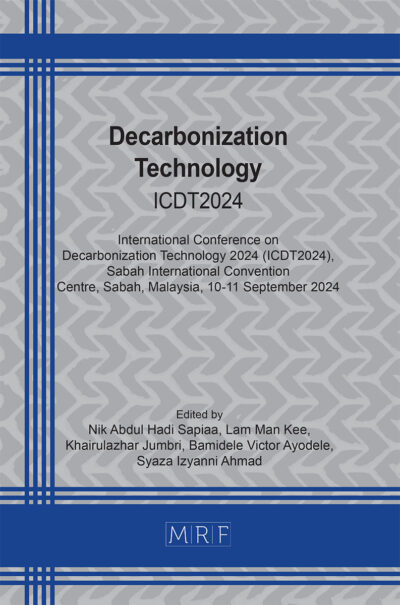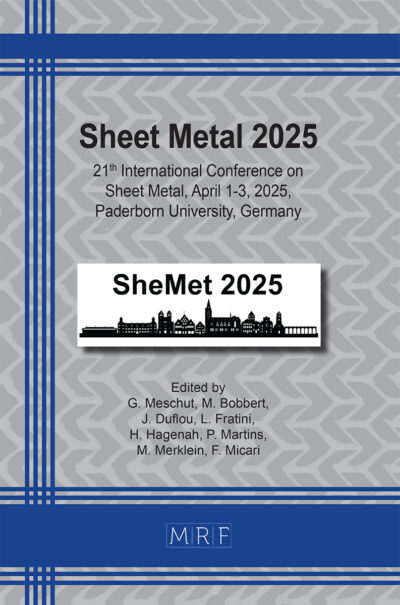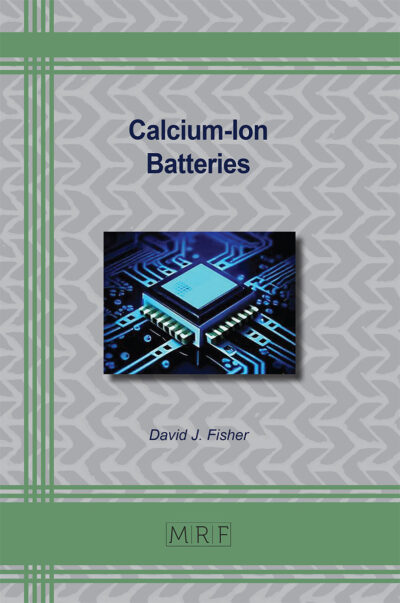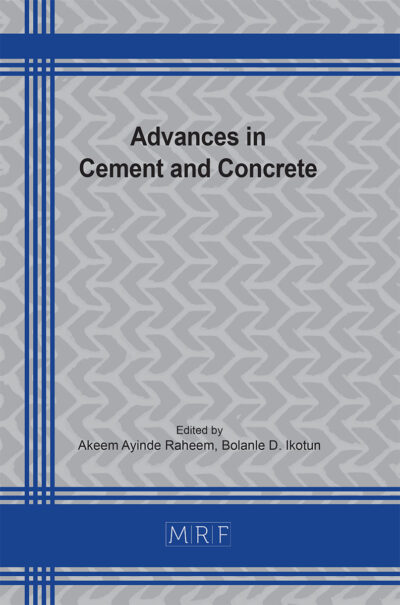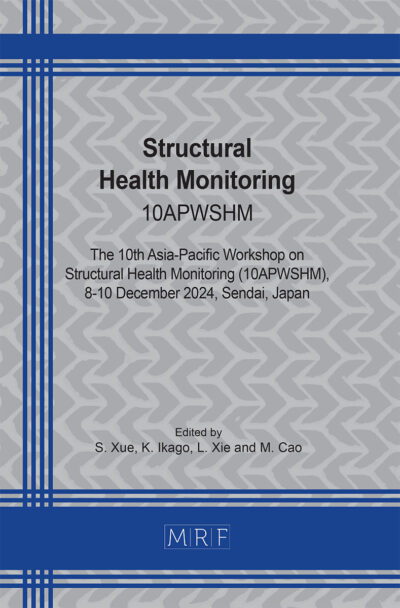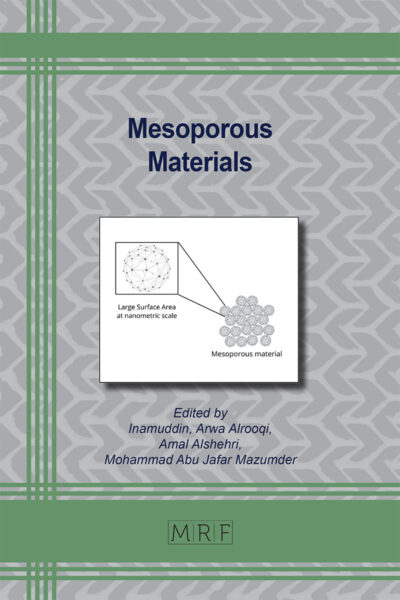Modeling of notch effects due to multi-material joints in automotive body components
Philipp Bähr, Silke Sommer, Gerson Meschut
Abstract. Subject of the present paper is the investigation of notch effects due to mechanical joints in press-hardened steel components. It can be observed that joints within a component structure result in a stress concentration. This stress concentration in combination with the load history of the material due to the joining process may result in failure of the component under crash load. A self-piercing riveted (SPR) joint between a 22MnB5 steel sheet with a thickness of 1.2 mm and an EN-AW 6016 aluminum sheet with a thickness of 2.0 mm has been experimentally and numerically investigated. The main investigations are concerned with the press-hardened sheet metal, as this is used in safety-relevant areas of the car body. First, experimental and metallographic investigations of the punched hole in the 22MnB5 have been performed to assess the quality of the punched edge. Then an elastic-plastic material model with additional phenomenological damage model has been calibrated for the 22MnB5. With the calibrated material model, a simulation of the SPR joining process has been performed to determine the load history of the joint. Based on the results of this process simulation, simplified shell models have been created, which consider the preload caused by the joining process. It was shown, that the SPR joining process results in high plastic strain and pre-damage of the sheet metal. By taking this process-related pre-damage into account the accuracy of crash simulations can be significantly increased.
Keywords
Finite Element Method (FEM), Joining, Notch Effects
Published online 4/1/2025, 8 pages
Copyright © 2025 by the author(s)
Published under license by Materials Research Forum LLC., Millersville PA, USA
Citation: Philipp Bähr, Silke Sommer, Gerson Meschut, Modeling of notch effects due to multi-material joints in automotive body components, Materials Research Proceedings, Vol. 52, pp 142-149, 2025
DOI: https://doi.org/10.21741/9781644903551-18
The article was published as article 18 of the book Sheet Metal 2025
![]() Content from this work may be used under the terms of the Creative Commons Attribution 3.0 license. Any further distribution of this work must maintain attribution to the author(s) and the title of the work, journal citation and DOI.
Content from this work may be used under the terms of the Creative Commons Attribution 3.0 license. Any further distribution of this work must maintain attribution to the author(s) and the title of the work, journal citation and DOI.
References
[1] G. Meschut, M. Merklein, A. Brosius, D. Drummer, L. Fratini, U. Füssel, M. Gude, W. Homberg, P. A. F. Martins, M. Bobbert, M. Lechner, R. Kupfer, B. Gröger, D. Han, J. Kalich, F. Kappe, T. Kleffel, D. Köhler, C.-M. Kuball, J. Popp, D. Römisch, J. Troschitz, C. Wischer, S. Wituschek und M. Wolf, Review on mechanical joining by plastic deformation, J. Adv. Join. Process. 5 (2022). https://doi.org/10.1016/j.jajp.2022.100113
[2] A. Chrysanthou, X. Sun, Self-piercing riveting: Properties, Processing and Applications, Woodhead Publishing Limited, 2014.
[3] S. Sommer, P. Bähr, G. Meschut, E. Unruh, Characterization and modeling of notch effects due to multi-material joints in car body components made of ultra-high strength steel, final report for AiF-FOSTA-project 19751N/P1268 (2022).
[4] E. Voce, The relationship between stress and strain for homogeneous deformation, J. Inst. Met. 74 (1948), 537-562.
[5] F. Andrade, M. Feucht, A. Haufe, F. Neukamm, An incremental stress state dependent damage model for ductile failure prediction, Int. J. Fract. 200 (2016), 127-150. https://doi.org/10.1007/s10704-016-0081-2
[6] Y. Bai, T. Wierzbicki, A new model of metal plasticity and fracture with pressure and Lode dependence, Int. J. Plast. 24.6 (2008), 1071-1096. https://doi.org/10.1016/j.ijplas.2007.09.004
[7] M. Bier, S. Sommer, Simplified modeling of self-piercing riveted joints for crash simulation with a modified version of *CONSTRAINED_INTERPOLATION_SPOTWELD, 9th European LS-DYNA Conference (2013).

